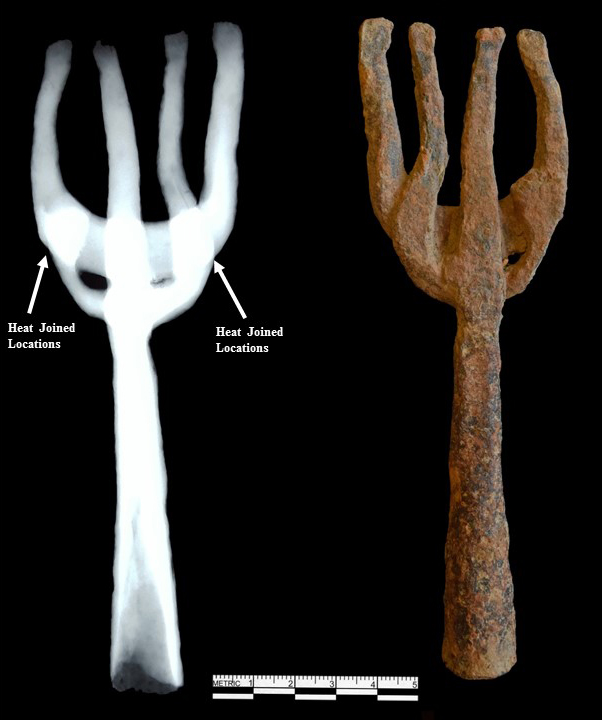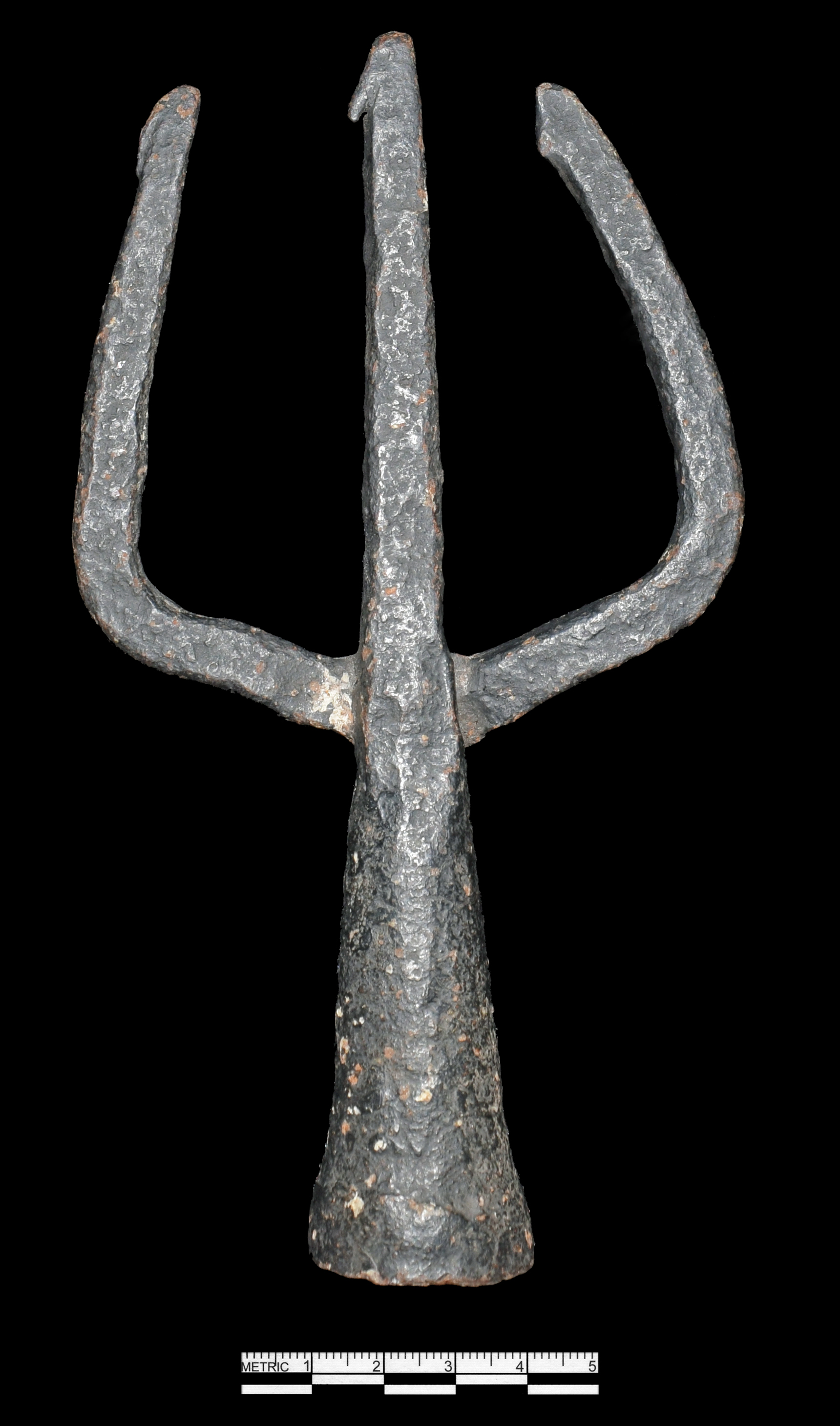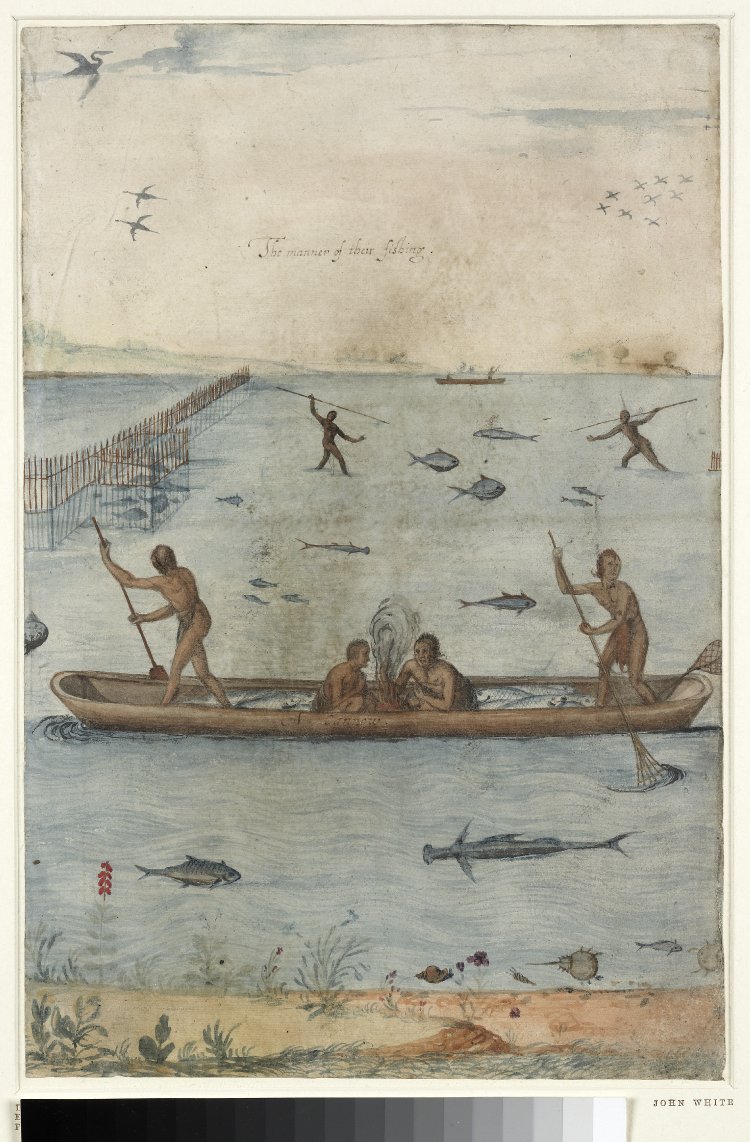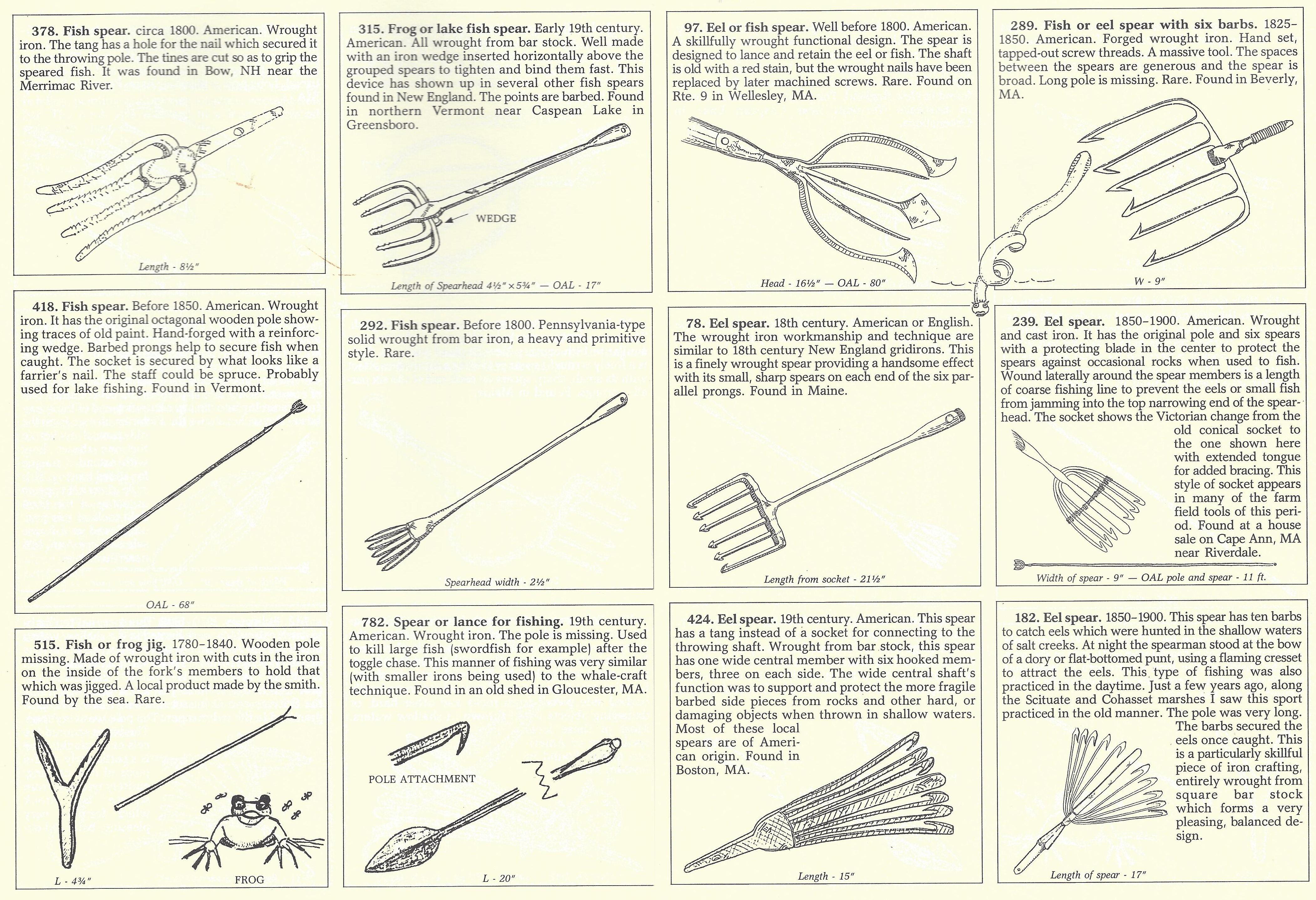A Wrought Iron Frog Gig Recovered in Randolph County, North Carolina
By Kerry S. González
People have been consuming frog legs for centuries. In 2013 National Geographic reported that 10,000-year-old cooked frog bones were found in England , long before the French were first documented as eating frog legs (Zuckerman 2013). According to cookbooks from the eighteenth century frog legs were part of haute cuisine in France, while in England the idea of eating frog legs “filled the British with disgust” (Zuckerman 2013). In the Americas, frog legs were an easily obtainable source of protein, provided you lived near a water source. Any source of protein was important, especially during hard times. But how do you catch frogs for consumption? Keep reading if you would like to know more. If frogs make you squeamish maybe stop reading here.
Frogs were captured using a tool known as a “gig.” The frog gig shown below was recovered from the Trogdon-Squirrel Creek site in Randolph County, North Carolina. Dovetail Cultural Resource Group conducted data recovery excavations at the site on behalf of the North Carolina Department of Transportation (NCDOT). Work was guided by the data recovery plan authored by NCDOT (Overton 2014).
The wrought iron frog gig appears to have been modified or hastily made as evidenced through an x-ray image. The gig was heat joined likely as a repair after one of the original three tines broke (pictured below). Heat joining, or forge welding, simply refers to heating two pieces of metal and joining them to create a solid bond. Frog gigs and eel gigs often have this trident shape and were used to pierce the skin of a frog or eel for capture. Frog gigging typically occurs at night when the creatures are most active but can certainly be done during the day.

Photo 1: Wrought Iron Frog Gig Recovered From Trogdon-Squirrel Creek Site. On left is an x-ray image of the frog gig and original is on right.

Photo 2: Wrought Iron Frog Gig From Personal Collection of D. Brad Hatch Showing Possible Original Form.
This form of gigging, also used at times to capture fish, has been used for centuries. A watercolor painting titled The Manner of Their Fishing done by Captain John White in 1585 illustrates Native Americans using spears and traps to catch fish (White 1585) (Figure1). While the spears used in the Mid-Atlantic during White’s time were made of a combination of bone, wood, and stone, the gig-construction method varied over the course of time. As illustrated in Hooks, Rings & Other Things (1988:155–156), there were many styles of spears which varied in shape depending on time period and purpose. The multi-pronged form, such as that found at the Trogdon Squirrel Creek site, was one of the most popular.
Next time you are at a restaurant and you are trying to decide between chicken or the steak, look to see if they offer frog legs, ‘the other white meat.’
Any distributions of blog content, including text or images, should reference this blog in full citation. Data contained herein is the property of Dovetail Cultural Resource Group and its affiliates.
References:
Barnes, Frank T.
1988 Hooks, Rings & Other Things. The Christopher Publishing House, Hanover, Massachusetts.
Overton, Brian
2015 Request for Proposal: Intensive Archaeological Survey and Evaluation, Asheboro U.S. 64 Bypass. North Carolina Department of Transportation, Human Environment Section, Raleigh, North Carolina.
White, John
1585 The Manner of Their Fishing. Electronic document, https://www.britishmuseum.org/research/collection_online/collection_object_details/collection_image_gallery.aspxassetId=22109001&objectId=753504&partId=1, accessed October 2018.
Zuckerman, Catherine
2013 Frog Legs: A British Innovation? Electronic document, https://news.nationalgeographic.com/news/2013/11/131107-frog-legs-england-france-food-archaeology-britain-wiltshire-french-english-british/, accessed October 2018.


